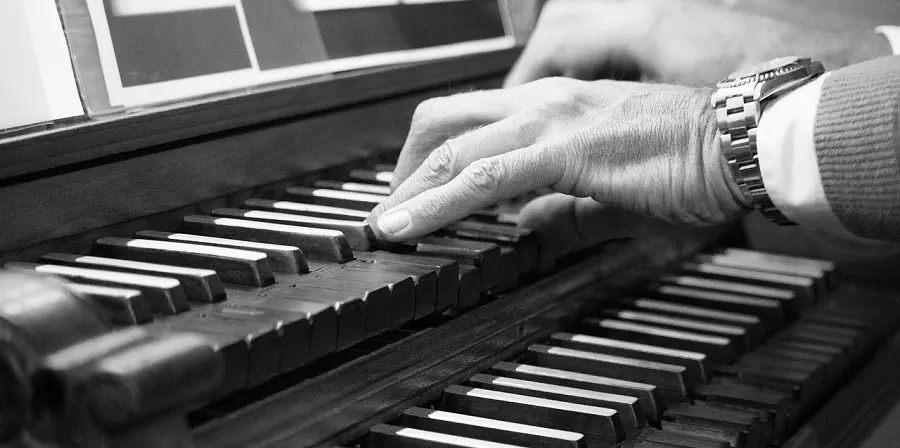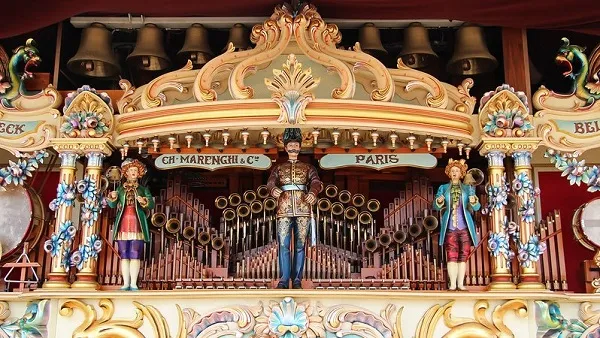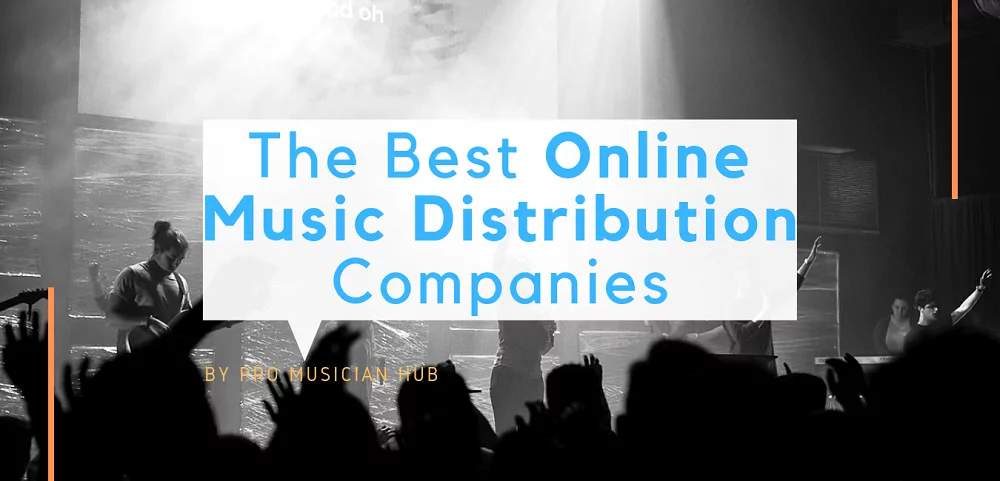According to the University of North Carolina, the organ was the most complex machine humans ever invented before the industrial revolution!
If you’re interested in knowing more about the types of organs music, this article will have you covered.
Today, I’ll guide you through everything you need to know about organ types and their music. Let’s hop in!
Types of Organs
The organ is considered a relatively old musical instrument, which was invented by Ctesibius of Alexandria about 2,200 years ago.
Ideally, the organs are classified into two main groups, pipe organs, and non-pipe organs. The pipe organs are the ones that use pipes in which the air flows producing sound.
On the other hand, non-pipe organs might also pass the air to make the sound but through other methods or not use air for sound at all. Here’s a list of the types of organs you can find out there.
1. Pipe Organ
The pipe organ is not only the largest type of organs, but the largest musical instrument there is!
Its size can reach up to 5 floors! However, most pipe organs will be as large as a small room or a large-sized piano.
They’re most commonly found as a built-in instrument in concert halls, churches, and homes. The pipes of the organ have various sizes and diameters, producing different sounds. The player would control the organ through a keyboard and/or foot pedals.
2. Reed Organ
The reed organ, also known as “the pump organ” or “harmonium”, is one of the first non-pipe organs to ever be invented.
This one generated the sound using reeds or thin metal frames similar to the ones found in an accordion.
It was popular in small churches and synagogues that couldn’t afford a pipe organ either due to price or size.
Reed organs have a much lower volume and a limited range when compared to full-sized pipe organs.
3. Electric Organ
Since the early 1930s, technology has advanced enough to make an electronic instrument capable of producing tunes similar to that of the pipe organ.
The electric organ was a huge success because it was much more affordable for small churches and amateur musicians. This gave rise to the revival of organ music outside the church, but more about this later.
4. Barrel Organ
It’s highly unlikely to spot a barrel organ today. The barrel organ was essentially a pipe organ encased in a barrel made of wood. The instrument was activated by rotating a crank, just like a music box.
5. Steam Organ
During the industrial age, the concept of an organ that uses pressurized steam rather than air was implemented.
The first steam organ, also known as calliope, was produced in the United State in the 1800s. It had a very loud and clean sound but was as large as the traditional ones, making it an outdoor instrument.
6. Portable Organ
Portable organs are a smaller version of the traditional organs. They had a limited number of small pipes into which the performer blew into. Portable organs are divided into a variety of styles, including the harmonica.
7. Water Organ
The water or hydraulic organ is the oldest type of pipe organ recorded in history. It was invented by the Greeks and used a similar concept as a traditional pipe organ.
However, this one used the kinetics of waterfalls and manual water pumping as a power source to push the air and make a sound.
Types of Organ Music
Now that you know more about the types of organs out there, it’s time to find out more about the music of the organ, its types, and where they’re played.
1. Classical Music
Throughout the 1500s and all the way to the late 1750s, classical music was a huge thing, and organs were an integral instrument that almost all composers used and praised.
After the mid 18th century, the piano has won a huge ground over the organ, and the classical music of the organ slowly shark and become limited to ceremonial music and religious uses.
2. Jazz Music
Although the electronic organ was originally designed to be a more affordable alternative or substitute for pipe organs, electronic organs produced quite different tunes than original pipe organs.
Various features and distinctive tones of the electronic organ became a significant part of these types of music, such as the vibrato, the overdrive, and the rotating Leslie speakers.
As a result, a lot of music genres started experimenting with the new instruments in their music back in the mid 20th century, such as blues, jazz, and gospel music.
The Hammond B3 was a huge part of jazz music in the 50s after it was popularized by Jimmy Smith. The new organ was considered a replacement for both the bass and the piano, which is why a lot of jazz musicians still use electronic organs to this day.
Today, organs are still used for playing, although the Hammond B3 is replaced with a much lighter and digitized version, known as clonewheel organs.
3. Pop Music
Prior to the 20th century, organ music was almost exclusively used for religious purposes. However, many musicians and artists tried to incorporate and benefit from the unique elements of organ melody in their music.
In addition to classical music and jazz, pipe organs were also used in some pop music throughout the 1900s, either by being in the background or by being the main theme of the music.
Among the most noticeable artists to compose organ music were:
- George Wright: Regarded as one of the greatest and most popular organist of the modern era
- William “Bill” Rowland: Popular theatre organist and the composer of “piano rags”
- Virgil K. Fox: Known for his powerful adaptations of Bach’s organ music
4. Rock Music
Church-style organs were also used in a variety of rock music songs, especially in the 1960s. The Hammond B3 organ was frequently used with a rotating Leslie speaker and gave an unusual sound that had some resemblance to electric guitars.
There are many bands that experimented with the sound of the organs, such as The Doors, Tangerine Dream, Pink Floyd, Deep Purple, Hootie & the Blowfish, Sheryl Crow, and more.
However, organ music slowly started dying out for various reasons. First, the Hammond organ was still a huge instrument despite being much smaller than a pipe organ.
So, the production of synth and keyboards that can produce similar organ melodies falls out in favor of more portable alternatives.
Some rock bands still use organ music in specific parts of their songs, such as the Swedish band Opeth in the song “Burden”.
5. Movies Music
The organ is one of the versatile musical instruments that is deeply correlated with “creepiness”. For that reason, a lot of musicians have emphasized the “spooky” factor of organ music while composing music for horror movies.
Of course, horror organ music is more associated with pipe organs rather than other types of non-pipe organs because they’re louder and much more versatile while electronic ones are less eerie and ominous.
6. Soap Operas Music
Back in the early 1930s when soap operas were created on the radio, organ music was considered the top tier music for drama.
This is why a lot of soap opera shows have incorporated organ music in their shows, either in their opening and closing themes or as background music for scenes.
The soap operas would continue to use organ music throughout the TV era up until the late 1960s when soap operas’ budget improved and they hired full-blown orchestras, which gives more dramatic effects.
“Days of our Lives” one of the all-time most popular soap operas came out in 1965 and was one of the soap operas that started the fully-orchestrated trend, only to be replaced with pre-recorded pop songs later on.
7. Sports Music
The organ has also found its way into sports, especially in the United State and Canada. The most notable sports to use organ music are basketball, baseball, and ice hockey.
The debut of organ music in sports was in the United States in 1941. The Chicago Cubs team board put an organ in their Stadium, the Wrigley Field, as an experiment for two games. The results were great! As many spectators enjoyed the auditory experience of the ballpark.
Soon after, Brooklyn Dodger’s hired the first-ever full-time ballpark organist at Ebbets Field, followed by the rest of the ballparks.
Organs would remain a staple for most baseball ballparks until they were partially or completely replaced with a pre-recorded rock or pop song.
As for basketball, at NBA games, especially at the critical points of the game, you’ll often hear repetitive organ music. They were used to hype the players and the spectators.
Various organ music themes are used whether to encourage the home team to attack or defend their own side of the court.
Hockey’s NHL is also known for organ sports music, with many teams hiring an organist to hype the viewers, lead the cues, play along with crowd chants, and other calls to action.
Hockey organists would usually adapt popular rock and pop hits as well as film scores into instrumentals on their organs.










